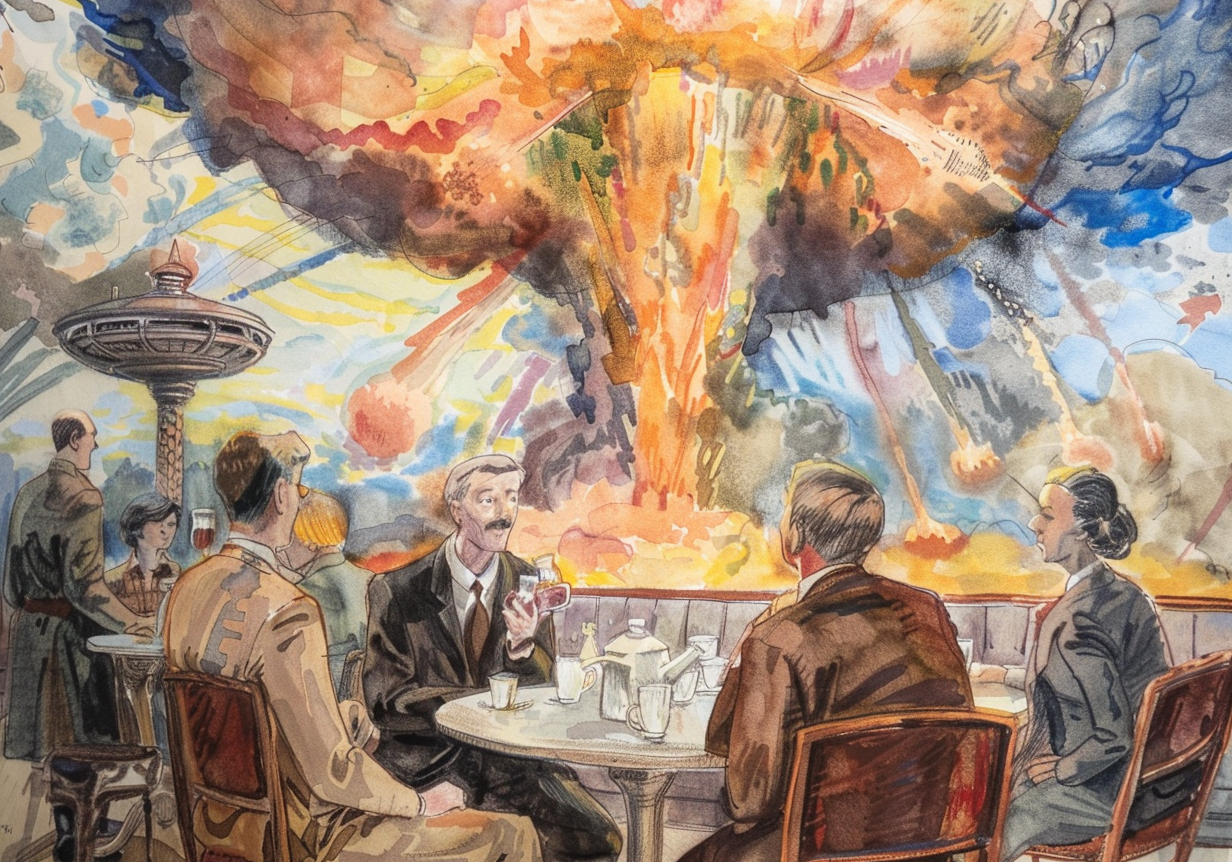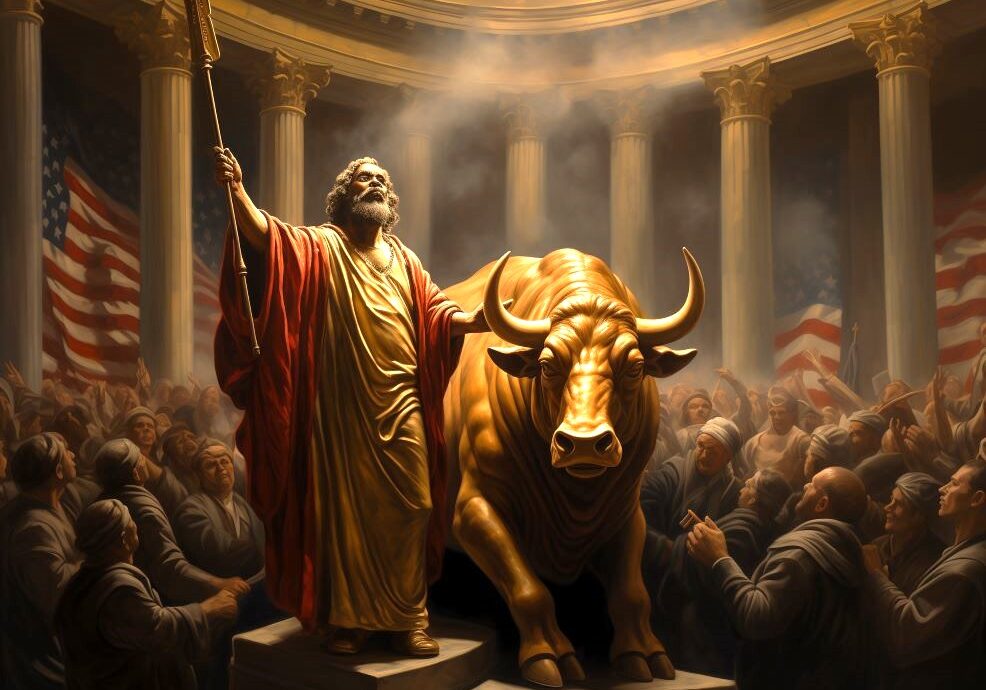Download a PDF copy of The Four Horsemen of the Great Ravine, Part 1 (paid subscribers only).
The Four Horsemen of the Great Ravine, Part 1
To learn more about Epsilon Theory and be notified when we release new content sign up here. You’ll receive an email every week and your information will never be shared with anyone else.
Continue the discussion at the Epsilon Theory Forum
The Latest From Epsilon Theory
DISCLOSURES
This commentary is being provided to you as general information only and should not be taken as investment advice. The opinions expressed in these materials represent the personal views of the author(s). It is not investment research or a research recommendation, as it does not constitute substantive research or analysis. Any action that you take as a result of information contained in this document is ultimately your responsibility. Epsilon Theory will not accept liability for any loss or damage, including without limitation to any loss of profit, which may arise directly or indirectly from use of or reliance on such information. Consult your investment advisor before making any investment decisions. It must be noted, that no one can accurately predict the future of the market with certainty or guarantee future investment performance. Past performance is not a guarantee of future results. Statements in this communication are forward-looking statements. The forward-looking statements and other views expressed herein are as of the date of this publication. Actual future results or occurrences may differ significantly from those anticipated in any forward-looking statements, and there is no guarantee that any predictions will come to pass. The views expressed herein are subject to change at any time, due to numerous market and other factors. Epsilon Theory disclaims any obligation to update publicly or revise any forward-looking statements or views expressed herein. This information is neither an offer to sell nor a solicitation of any offer to buy any securities. This commentary has been prepared without regard to the individual financial circumstances and objectives of persons who receive it. Epsilon Theory recommends that investors independently evaluate particular investments and strategies, and encourages investors to seek the advice of a financial advisor. The appropriateness of a particular investment or strategy will depend on an investor’s individual circumstances and objectives.
This commentary is being provided to you as general information only and should not be taken as investment advice. The opinions expressed in these materials represent the personal views of the author(s). It is not investment research or a research recommendation, as it does not constitute substantive research or analysis. Any action that you take as a result of information contained in this document is ultimately your responsibility. Epsilon Theory will not accept liability for any loss or damage, including without limitation to any loss of profit, which may arise directly or indirectly from use of or reliance on such information. Consult your investment advisor before making any investment decisions. It must be noted, that no one can accurately predict the future of the market with certainty or guarantee future investment performance. Past performance is not a guarantee of future results. Statements in this communication are forward-looking statements. The forward-looking statements and other views expressed herein are as of the date of this publication. Actual future results or occurrences may differ significantly from those anticipated in any forward-looking statements, and there is no guarantee that any predictions will come to pass. The views expressed herein are subject to change at any time, due to numerous market and other factors. Epsilon Theory disclaims any obligation to update publicly or revise any forward-looking statements or views expressed herein. This information is neither an offer to sell nor a solicitation of any offer to buy any securities. This commentary has been prepared without regard to the individual financial circumstances and objectives of persons who receive it. Epsilon Theory recommends that investors independently evaluate particular investments and strategies, and encourages investors to seek the advice of a financial advisor. The appropriateness of a particular investment or strategy will depend on an investor’s individual circumstances and objectives.










I get the meaning, I think. He is observing a tension between short-term comfort or concord and long-term meaning, purpose, or narrative of a village.
And, cranky hidebound old people of every generation tell Just So Stories like this, recorded back to Roman times, no? Many of them to the modern ear are clearly ridiculous or at least incomplete and based on revised memories. “When I was your age I used to walk 6 miles to school each way in the snow and we didn’t have the Internet and so now all the kids are lazy and fat!”
Independent of the problem of motivated historians, I’m curious how/if LLMs can tease out some fundamental distinction of the vibes here.
(I have changed my mind about generative AI. In part because I have learned to use ChatGPT to save some time and money on some business stuff. BUT, what hooked me was AI not as nebbish but as bard: when my brother stayed over this Christmas and, in a matter of hours and without any prior AI knowledge, learned prompting enough to create beautiful absurd art with DALL-E based on the imagination of my 3-year-old.)
Ben, are you sure you have never been to 1887 and commissioned a painting?
What would that painting look like in the context of our higher-technological society?
I don’t care about the [insert famine icon] (famine), syringe (pestilence), missile (war), mushroom cloud (death), but the word.
If it would show a microphone/camera more than a keyboard, then the word has lost its communication supremacy to a coalition.
Words are cheap, quality film clips aren’t.
I think GPT40 did a pretty good job of extracting the Semantic Signatures of Ben’s piece. I need to use this miracle tool more often.
ChatGPT:
The semantic signature of the PDF, “The Four Horsemen of the Great Ravine, Part 1” by Ben Hunt, is rooted in a set of recurring motifs that capture the author’s exploration of societal collapse, historical patterns, and the loss of meaning within institutions and culture. These embedded themes reflect a worldview that societies follow predictable paths of decline and fragmentation, often catalyzed by internal weaknesses rather than external forces.
Here are the key semantic motifs that make up its signature:
The document’s core semantic signature can be described as:
It blends themes of existential wandering, political polarization, and institutional decay, while advocating for using semantic tools to preserve historical truths and find wisdom in the past for future resilience.
Pretty wild, right? Once you start applying this semantic lens to texts, you can’t stop!
It is still more enjoyable to read from a human source versus links of silicon/gallium arsenide or whatever the new chips are made from…
Great writing. Really hits home on a day like today when I am told my country will be forced to be annexed by the US or else. Keep it up!